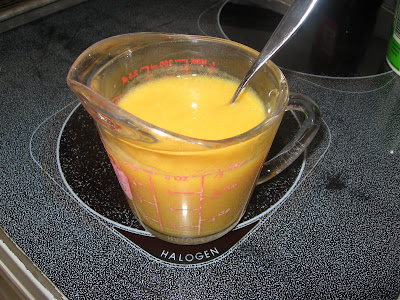While fall has not *officially* arrived, I'm still already craving autumnal dishes. We eat a lot of chili when it's cold outside, and I've managed to create a pretty damn good chicken version.
I started off a few years ago with a recipe from my uncle Frank, a kickass cook in his own right. I tweaked the ingredients to better suit our tastes- less heat, black beans instead of great northern- and voila! An easy one-pot dinner that garners me lovely compliments from anyone who eats it. Even a confirmed novice can make this one, and it's very kid friendly and full of veggies and fiber.
Chicken Chili
Serves 4-6
4 boneless, skinless chicken breasts, cubed
1 cup chopped onion
2 stalks celery, chopped
3-4 cloves garlic, chopped or put through a press
1 - 15 oz. can black beans, drained (I don't rinse mine)
1 - 15 oz. can corn, drained
1 can Ro-Tel tomatoes with green chiles, mild or regular, *not* drained
2 tsp. chile powder (I buy chile New Mexico powder from the Latin section of the grocery store- it's inexpensive, mild, and has a nicer, purer flavor than the mixture called "chili powder")
1 tbsp. ground cumin
1 tsp. dried oregano
1 tbsp. Worcestershire sauce
3 chicken bouillon cubes
2-3 cups water (or omit cubes and just use 2-3 cups of chicken stock)
Olive oil
Kosher salt and fresh black pepper
Garnishes as desired: chopped fresh cilantro, sour cream or yogurt, green onions, chipotle Tabasco sauce (a mild and smoky hot sauce)
Heat a good drizzle of olive oil in a large stockpot over medium-high heat. Add the cubed chicken, season with a little salt and pepper, and cook, stirring frequently, until chicken is almost cooked through, 5-8 minutes. Add onion, celery, and garlic and cook for another 2-3 minutes. Stir in chile powder, cumin, oregano, and Worcestershire. Add the bouillon cubes, water, beans, corn, and Ro-Tel (with its liquid). Bring to a simmer and cook, uncovered, for about 15 minutes.
Garnish with cilantro, sour cream, or other things as desired. My husband likes his a little smoky, so he uses the chipotle Tabasco.
It's especially good as leftovers.



































